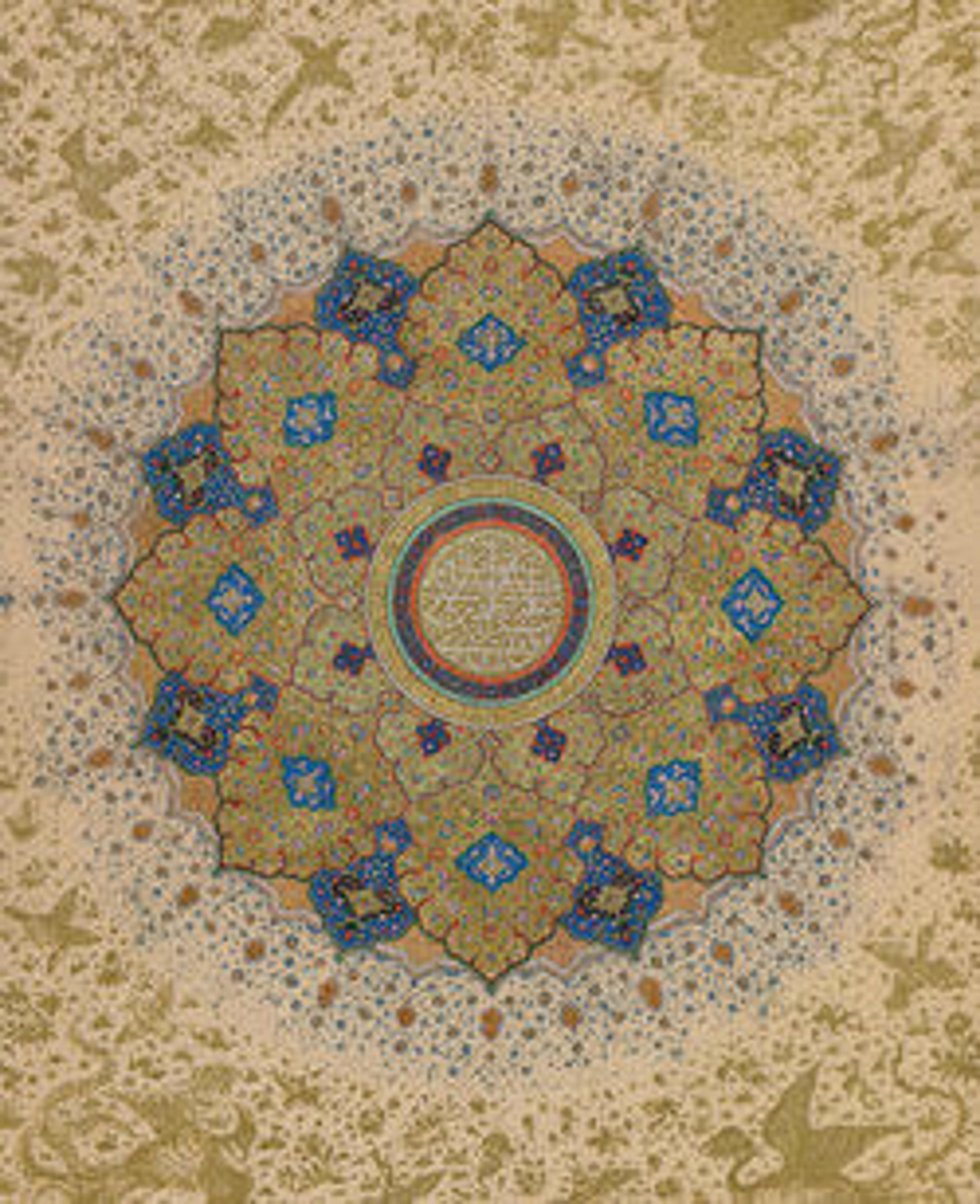Bowl with Variation of 'Baba Nakkas' Design
Some of the earliest Iznik stonepaste ceramics are distinguished by delicate underglaze‑painted blue decoration on a white ground. The meandering vine of two‑toned flowers and the white‑on‑blue decoration of this small bowl link it to an early group of ceramics referred to as Baba Nakkas (literally, "Papa Designer") ware named for an artist employed by the Ottoman sultan Mehmed II (r. 1444–46, 1451–81).
Artwork Details
- Title:Bowl with Variation of 'Baba Nakkas' Design
- Date:ca. 1500–1525
- Geography:Attributed to Turkey, Iznik
- Medium:Stonepaste; painted in light and dark blue under transparent glaze
- Dimensions:H. 5 3/16 in. (13.1 cm)
Diam. 10 in. (25.4 cm) - Classification:Ceramics
- Credit Line:Rogers Fund, 1932
- Object Number:32.34
- Curatorial Department: Islamic Art
More Artwork
Research Resources
The Met provides unparalleled resources for research and welcomes an international community of students and scholars. The Met's Open Access API is where creators and researchers can connect to the The Met collection. Open Access data and public domain images are available for unrestricted commercial and noncommercial use without permission or fee.
To request images under copyright and other restrictions, please use this Image Request form.
Feedback
We continue to research and examine historical and cultural context for objects in The Met collection. If you have comments or questions about this object record, please contact us using the form below. The Museum looks forward to receiving your comments.
